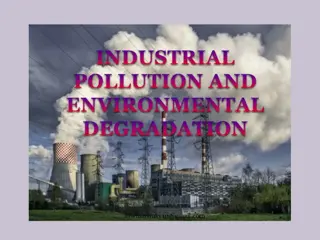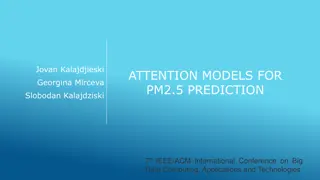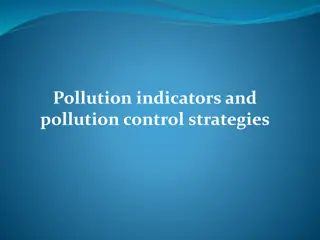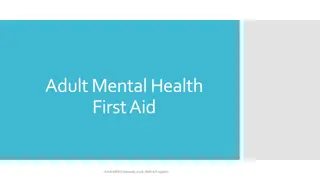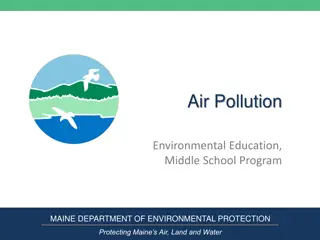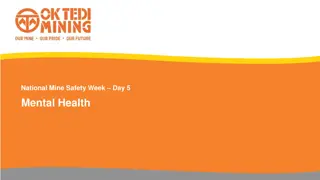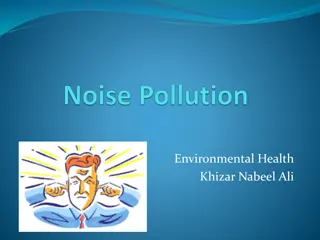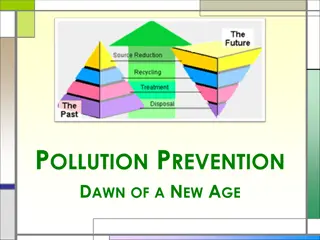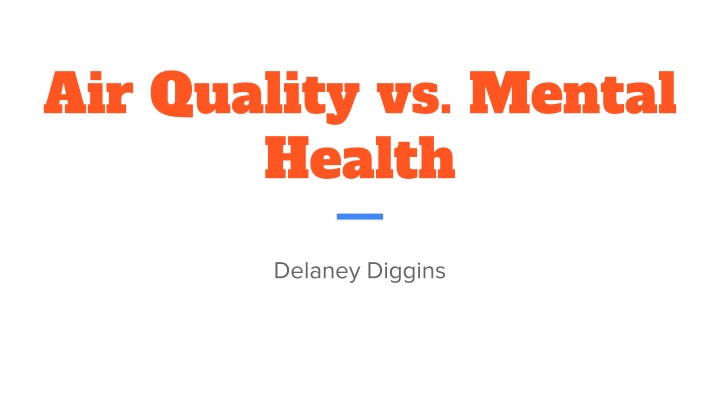
Exploring the Relationship Between Air Quality and Mental Health: A Data Analysis Study
Delaney Diggins conducted a study comparing median Air Quality Index to the percentage of the population reporting mental illness. The hypothesis suggested that areas with poorer air quality would exhibit higher rates of mental illness. However, the regression analysis showed a very low correlation coefficient, indicating that air quality may not have a significant impact on mental health. The study also highlighted the importance of considering other factors such as population, pollution events, and demographics when analyzing this relationship.
Download Presentation

Please find below an Image/Link to download the presentation.
The content on the website is provided AS IS for your information and personal use only. It may not be sold, licensed, or shared on other websites without obtaining consent from the author. If you encounter any issues during the download, it is possible that the publisher has removed the file from their server.
You are allowed to download the files provided on this website for personal or commercial use, subject to the condition that they are used lawfully. All files are the property of their respective owners.
The content on the website is provided AS IS for your information and personal use only. It may not be sold, licensed, or shared on other websites without obtaining consent from the author.
E N D
Presentation Transcript
Air Quality vs. Mental Health Delaney Diggins
Overview Comparing Median Air Quality Index to the percentage of population reporting mental illness Hypothesis: Areas with poorer average air quality will have higher rates of mental illness Analysis: Least Squares Regression Regression Quality Analysis Regression & Data Improvement
Data Overview Air Quality: Median AQI each year for each U.S. state (US EPA) Mental Health: Percentage of population reporting any mental illness each year (US SAMHSA)
Slope = -7.5130e-06 Intercept = 0.2061 Correlation Coefficient: -0.139025
Regression Quality Residuals do not follow a normal distribution Confirmed with a chi2 test Very low correlation coefficient Overall not a good regression
Location Specific Data Can see much more significant correlations when looking at more specific regions These correlations still have a wide range and large confidence intervals Regression quality: Residuals still do not follow a normal distribution based on state-specific LSR Poor regression quality
Conclusions Unable to confirm hypothesis from data set Reducing potential variables: Track the aqi and mental health data from a single city over several years Compare two areas with similar demographics but different average air quality Multivariable approach/account for potential other variables: Population Major pollution or weather events Number of metropolitan areas
References Annual AQI by County 1980-2023, United States Environmental Protection Agency, Oct. 2023. NSDUH Detailed Tables 2014-2022, Substance Abuse and Mental Health Services Administration, Jan. 2023.




